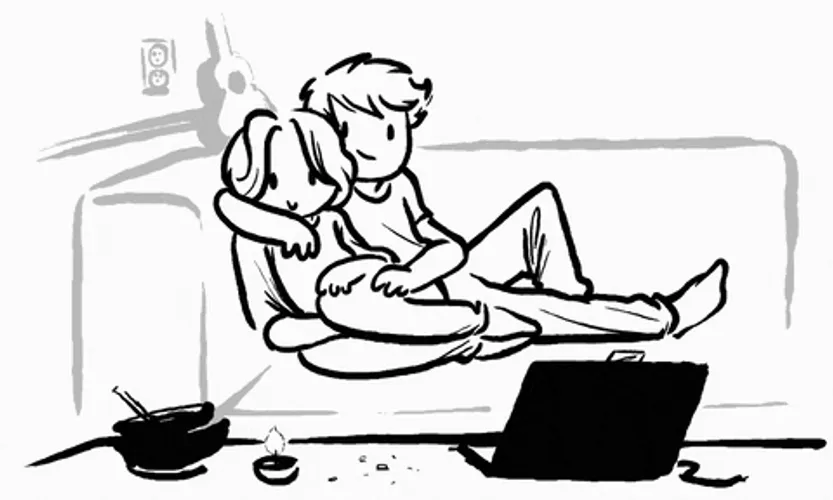Hello all and welcome to week 8 of the Senior Research Projects through my eyes...
As the title of this blog suggests, I did indeed read about the "transition stage" of ACT. If this phrasing confuses you, by transition stage, I mean the stage during which someone undergoing ACT would have their neural pathways remolded - technically this isn't a "stage" as this period of time is supposed to last throughout the entire treatment process and beyond. To explain it further and connect this subsection of my paper to the other subsections of my paper (the results section will contain three subsections: Psychological Underpinnings, Neurobiological Underpinnings, and Transition Stage), the "transition stage" will talk about the effects of the psychological underpinnings on the neurobiological underpinnings. For the sake of clarity, I will state the purpose of this subsection another time: the "transition phase" will discuss how the brain changed before and after/during ACT.
Like last week, I will include the introductory paragraph to the mentioned subsection:
The root of ACT's success lays in its emphasis on peaceful teachings and smooth training. Rather than forcefully attempting to enact physical neural change, the therapy allows for the brain to be taught an old way which has been forgotten, or an entirely new way of functioning. Neural pathways are remolded not through trickery or submission, but are instead led towards change through the impact of the six pillars of ACT: acceptance, self-as-context, defusion, values, contact with the present moment, and committed action. Both the patient and the therapist are involved in the transitional stages of therapy, enabling the patient to come to their own conclusions and improve their own quality of life. The therapist acts as a guiding hand rather than a strict enforcer of principles. The psychological aspects of ACT affect the neurobiological aspects, leading to changes in neural pathways; the philosophy behind the therapy causes the physical change seen in patients before and after implementing ACT.
This paragraph is actually unedited so I hope you can forgive any terrible mistakes I may have made...but please do tell me in the comments below if you have any suggestions!
P.S. Gillian (a member of my blog group) turned 18 today so if you want to read about PTSD and mice experiments or even just wish her luck in adulthood you can check out her blog.
P.P.S. Good luck to everyone taking mocks (I hear the AP Psychology mock was today so if any of you took that I hope my blog mentioned something at some point which you found useful)!
Friday, March 31, 2017
Friday, March 24, 2017
Psychological Underpinnings
Hello all and welcome to week 7 of my Senior Research Project!
This week, I read a multitude of papers on the psychological underpinnings of ACT. After dissecting dozens of papers, I realized that I had little information about the waves of psychotherapy to draw from as the papers tended to focus on peaceful teachings. In order to include the three waves of psychotherapy, I consulted my old AP Psych textbook from 10th grade *ah the memories*.
Here is the introductory paragraph for the Psychological Underpinnings section of my systematic review:
Anywho I spent my week reading papers, books, and websites in order to better understand the psychological underpinnings of ACT and to refresh my mind a bit so that I could better remember what I learned all those years ago in AP Psych.
P.S. I do not actually "vaguely remember someone crying"...I just liked the gif :)
P.P.S. If any of you are interested in buying a Psych textbook for fun, I would recommend Myers' Psychology for AP as the authors occasionally made puns and bad jokes which I enjoyed
This week, I read a multitude of papers on the psychological underpinnings of ACT. After dissecting dozens of papers, I realized that I had little information about the waves of psychotherapy to draw from as the papers tended to focus on peaceful teachings. In order to include the three waves of psychotherapy, I consulted my old AP Psych textbook from 10th grade *ah the memories*.
Here is the introductory paragraph for the Psychological Underpinnings section of my systematic review:
Acceptance and Commitment Therapy (ACT) has roots in both peaceful teachings - such as Buddhism, yoga, meditation, Sufism, and Mindfulness Meditation (MM) - and other psychological theories - such as Sigmund Freud’s theories, B.F. Skinner’s Radical Behaviorism, Cognitive Behavior Therapy (CBT), Relational Frame Therapy (RFT), and Dialectic Behavior Therapy (DBT). This vast collection of influencers has put it at the forefront of third wave psychotherapy. The combined effective elements of each teaching and therapy has promoted success in improving the quality of life of individuals with a large variety of conditions or disorders. In order for ACT to be improved and for its success to be replicated in alternate therapies, its psychological underpinnings must be fully comprehended. Understanding the philosophy behind the therapy enables a better understanding of the change fostered by the therapy, and knowledge of both is paramount for a complete appreciation of ACT.
Next in the psychological underpinnings section comes the subsections: peaceful teachings, first and second waves of psychotherapy, and last but definitively not least...third wave of psychotherapy. The first mentioned subsections draws primarily from the papers I dissected this week. The second subsection mostly references my old AP Psych textbook: Myers' Psychology for AP. The third subsection principally alludes to websites and books.
If you have any questions please feel free to ask them!
If you have any questions please feel free to ask them!
Anywho I spent my week reading papers, books, and websites in order to better understand the psychological underpinnings of ACT and to refresh my mind a bit so that I could better remember what I learned all those years ago in AP Psych.
P.S. I do not actually "vaguely remember someone crying"...I just liked the gif :)
P.P.S. If any of you are interested in buying a Psych textbook for fun, I would recommend Myers' Psychology for AP as the authors occasionally made puns and bad jokes which I enjoyed
Friday, March 17, 2017
Neurobiological Underpinnings
Hello all and welcome to Week 6 of the weekly Danielle blog!
This week I focused on reading and dissecting the papers chosen for the neurological underpinnings section of my systematic review. By the end of this process, I was left with more of the chosen papers excluded than included, and oftentimes I would decide to not use a paper after I had already read and taken notes on the entire paper, which was a little frustrating. However, by the last couple papers, I had developed a more effective method of dissection, which should make the coming weeks a little simpler and more exciting. Some of the reasons for why I decided to not include chosen papers were: a lack of original material, a lack of neurological focus, or a lack of large quantities of information. There was a particular disorder, PTSD (post-traumatic stress disorder), which I was particularly dismayed upon realizing that none of the chosen papers from my original search which focused on it would be included. In the case of papers on PTSD, I found that papers tended to emphasize the behavioral aspects of the disorder rather than the physical aspects, eliminating it from my paper. I was excited to learn more about this disorder due to its complexity (after this week I realized that finding a psychological condition which can be described as "simple" would be a Herculean task), similarity with other conditions, and comorbidity with other conditions. I hope I didn't geek out too much right there but if you weren't able to tell...I just really want to know how the brain works.
After organizing my notes a bit and outlining the section, Patherica and I met to discuss how to order the section and to clear up some of my confusion. We decided that since some of the conditions my paper will talk about are specific disorders and others are conditions which include different aspects of other disorders but are not part of a specific umbrella group of psychiatric taxonomy, the conditions should be ordered as such: chronic stress, anorexia nervosa, anxiety, trichotillomania, chronic pain (and fibromyalgia), self-harm (suicidal and non-suicidal), substance abuse (including opioid and methamphetamine dependence), then attention deficit hyperactivity disorder. We decided that chronic stress should be the first because it can lead to the development of almost any other disorder or condition. Anorexia nervosa was put next due to its similarity to anxiety, which is very closely related to trichotillomania due to the two's similarities with OCD, which I did not find any suitable papers on. Also, if any oh you are not aware (which I imagine must be many of you), trichotillomania is a disorder which is characterized by compulsive hair pulling. Next, we put chronic pain and fibromyalgia - which is a type of chronic pain (Patherica reminded me to emphasize that while not all chronic pain is fibromyalgia, all fibromyalgia is chronic pain). Since chronic pain has a high comorbidity with self-harm and substance abuse, both often serving as coping mechanisms, we decided that they should follow chronic pain. Last but not least came ADHD. While this disorder is not specifically similar to any of the previously mentioned disorders and conditions, we thought it should be mentioned last, serving as a way to show that ACT is effective as a treatment for non-stress-related disorders as well as stress-related ones.
I hope this post was as exciting for you all as it was for me :)
I can't wait to give you all another update next week. Godspeed in your adventures my followers.
This week I focused on reading and dissecting the papers chosen for the neurological underpinnings section of my systematic review. By the end of this process, I was left with more of the chosen papers excluded than included, and oftentimes I would decide to not use a paper after I had already read and taken notes on the entire paper, which was a little frustrating. However, by the last couple papers, I had developed a more effective method of dissection, which should make the coming weeks a little simpler and more exciting. Some of the reasons for why I decided to not include chosen papers were: a lack of original material, a lack of neurological focus, or a lack of large quantities of information. There was a particular disorder, PTSD (post-traumatic stress disorder), which I was particularly dismayed upon realizing that none of the chosen papers from my original search which focused on it would be included. In the case of papers on PTSD, I found that papers tended to emphasize the behavioral aspects of the disorder rather than the physical aspects, eliminating it from my paper. I was excited to learn more about this disorder due to its complexity (after this week I realized that finding a psychological condition which can be described as "simple" would be a Herculean task), similarity with other conditions, and comorbidity with other conditions. I hope I didn't geek out too much right there but if you weren't able to tell...I just really want to know how the brain works.
After organizing my notes a bit and outlining the section, Patherica and I met to discuss how to order the section and to clear up some of my confusion. We decided that since some of the conditions my paper will talk about are specific disorders and others are conditions which include different aspects of other disorders but are not part of a specific umbrella group of psychiatric taxonomy, the conditions should be ordered as such: chronic stress, anorexia nervosa, anxiety, trichotillomania, chronic pain (and fibromyalgia), self-harm (suicidal and non-suicidal), substance abuse (including opioid and methamphetamine dependence), then attention deficit hyperactivity disorder. We decided that chronic stress should be the first because it can lead to the development of almost any other disorder or condition. Anorexia nervosa was put next due to its similarity to anxiety, which is very closely related to trichotillomania due to the two's similarities with OCD, which I did not find any suitable papers on. Also, if any oh you are not aware (which I imagine must be many of you), trichotillomania is a disorder which is characterized by compulsive hair pulling. Next, we put chronic pain and fibromyalgia - which is a type of chronic pain (Patherica reminded me to emphasize that while not all chronic pain is fibromyalgia, all fibromyalgia is chronic pain). Since chronic pain has a high comorbidity with self-harm and substance abuse, both often serving as coping mechanisms, we decided that they should follow chronic pain. Last but not least came ADHD. While this disorder is not specifically similar to any of the previously mentioned disorders and conditions, we thought it should be mentioned last, serving as a way to show that ACT is effective as a treatment for non-stress-related disorders as well as stress-related ones.
I hope this post was as exciting for you all as it was for me :)
I can't wait to give you all another update next week. Godspeed in your adventures my followers.
Friday, March 10, 2017
Spring Break
Hello all,
As the title of this post suggests, I did indeed take my spring break this week. Instead of posting about my week I will insert some gifs about what I did this week.
Friday (3/3):
Sunday (3/5):
Monday (3/6):
Tuesday (3/7):
Wednesday (3/8):
As the title of this post suggests, I did indeed take my spring break this week. Instead of posting about my week I will insert some gifs about what I did this week.
Friday (3/3):
Saturday (3/4):
Sunday (3/5):
Monday (3/6):
Tuesday (3/7):
Wednesday (3/8):
Thursday (3/9):
Friday (3/10):
Friday, March 3, 2017
Introduction
Hello my lovelies (ooh changed up the intro...I'm sure you all noticed).
Anywho, this week I took a small break from researching and focused on writing the introduction for my systematic review (although I must admit that I did do a bit of researching to fact check my words mostly)
I will include my introduction between some gifs so please comment any suggestions which you might have on how I could make it better (even if your advice has to do with sentence placement or word choice please include any criticisms!)
The results section will include three subsections: psychological underpinnings, neurobiological underpinnings, and transition phase. The psychological underpinnings subsection will discuss the peaceful teachings which inspired ACT and relational frame therapy. This will serve as an explanation for how ACT was conceived. The neurobiological underpinnings subsection will discuss neural receptors, neural patterns, genetics, and specific disorders. This will serve as an explanation for the brain before it is reshaped. The transition phase will discuss how the psychological aspects of ACT affect the neurobiological aspects, leading to changes in neural pathways. This will serve as a link between the two aforementioned subsections, as an explanation for how the philosophy behind the therapy caused physical change.
I hope you all appreciated this masterpiece of words...yes yes it is a masterpiece I assure you. Also, have a lovely time until my next post! AND I'm sorry I didn't have a third gif (I don't know about you but I love a good triad) but I hope you all forgive me.
P.S. I am aware that some spacing and sizing is off but I have no idea how to fix it (when I copy and pasted my intro from a google doc to here the formatting got a little off)
I have decided to fix the lack of a triad:
Anywho, this week I took a small break from researching and focused on writing the introduction for my systematic review (although I must admit that I did do a bit of researching to fact check my words mostly)
I will include my introduction between some gifs so please comment any suggestions which you might have on how I could make it better (even if your advice has to do with sentence placement or word choice please include any criticisms!)
Acceptance and Commitment Therapy (ACT) is a Cognitive-Behavior Therapy focusing on acceptance and mindfulness so as to improve the quality of life of individuals suffering from various conditions. While it can be implemented in treatments for many conditions, it has been particularly successful in the improving quality of life of people with depression, anxiety, and chronic pain. The therapy has roots in peaceful teachings such as buddhism, yoga, and meditation as well as taking part in the third wave of cognitive-behavior therapies. Commonly seen as being based in Relational Frame Theory (RFT) - a contextual theory linking language to cognition, naming both pillars of society - ACT emphasizes the importance of psychological flexibility and the dangers of experiential avoidance and cognitive fusion. Through ACT, facing difficult subjects and overcoming obstacles is possible, paving the way toward manageable physical and emotional pain. ACT does not promise to serve as a cure for all pains but instead serves as a means to continue living a life worth living, one where personal values and dreams are sought and cherished rather than shunned, overshadowed by existing negatives.
ACT along with RFT and Dialectic Behavior Therapy (DBT) leads the third wave of psychotherapy. This wave incorporates aspects of the two prior waves; in the case of ACT, this primarily means the theories of Sigmund Freud (first wave), Cognitive Behavior Therapy (CBT) (second wave), and B.F. Skinner (second wave). Freud’s theories place much value on acceptance and insight. CBT attempts to change external responses through internal change. Skinner’s theory of Radical Behaviorism emphasizes the impact of experience in the nature vs. nurture conflict. As a whole, ACT is differentiated from the first wave of psychotherapy due to its reliance on the clinician’s lead and from the second wave due to its reliance on the patient’s insight. In order for counseling to function, neither participant must take complete control. Instead, both must participate, the patient telling his/her truthful thoughts and emotions while the clinician leads the patient towards realizations and useful insight.
This paper will discuss the neurological underpinnings of ACT and how the therapy allows for neural pathways to be remolded. In order for this to be properly understood, knowing the psychological underpinnings of the therapy is paramount. Fully knowing and understanding the therapy may enable its successful attributes to be replicated and integrated into other therapies. Through an in-depth analysis of ACT, the therapy may be bettered and utilized to its fullest potential. It already has the potential to help millions of people; now, what must be done is to unlock this potential to the extent where any number of variations would aid any number of conditions and any number of people.
The results section will include three subsections: psychological underpinnings, neurobiological underpinnings, and transition phase. The psychological underpinnings subsection will discuss the peaceful teachings which inspired ACT and relational frame therapy. This will serve as an explanation for how ACT was conceived. The neurobiological underpinnings subsection will discuss neural receptors, neural patterns, genetics, and specific disorders. This will serve as an explanation for the brain before it is reshaped. The transition phase will discuss how the psychological aspects of ACT affect the neurobiological aspects, leading to changes in neural pathways. This will serve as a link between the two aforementioned subsections, as an explanation for how the philosophy behind the therapy caused physical change.
P.S. I am aware that some spacing and sizing is off but I have no idea how to fix it (when I copy and pasted my intro from a google doc to here the formatting got a little off)
I have decided to fix the lack of a triad:
Subscribe to:
Posts (Atom)



















